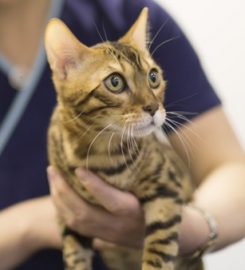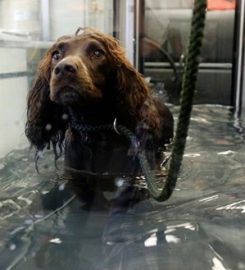Jessica's Dog Grooming
Pet Vaccinations
Vaccinations are an essential part of responsible pet care, but many owners aren’t fully aware of the benefits of vaccinating their pet or the risks of not doing so. A vaccination appointment provides a chance for your vet to conduct a full nose-to-tail check of your pet to ensure they’re fit and healthy. If there are no signs of illness or injury, they’ll review your pet’s vaccination history and discuss their needs with you before giving them the necessary vaccines.
Pet Microchipping
Microchipping is an easy and pain-free way of keeping track of your precious pets should they wander or get lost.
Ultrasound
A pet ultrasound is a non-invasive imaging technique used to view your pet’s internal organs and identify potential issues.
What’s a pet ultrasound?
An ultrasound is a safe, non-invasive diagnostic procedure that gives your vet a two-dimensional ‘picture’ of your pet’s organs. In the procedure, a hand-held probe uses sound waves to create an image that’s displayed on a monitor.
When do we do a pet ultrasound?
It can be used to investigate issues such as:
- A heart murmur
- Irregular heartbeats (arrhythmia)
- Laboured breathing
- Birth problems
- Organ diseases (e.g. liver and kidney problems)
- Vomiting and diarrhoea
- Foreign objects in the body
- Tendon injuries
- Pregnancy
- Urinary problems
- And many others
What does a pet ultrasound involve?
It’s sometimes not necessary to anaesthetise or sedate your pet for ultrasound examinations as the technique is completely painless. Many pets will simply lie comfortably while the scan is being performed. If your pet is particularly sensitive or anxious, a sedative may be needed.
Your pet’s hair will generally need to be clipped over the area being examined to allow for a clear image. Your vet will then place gel on the area and methodically move the ultrasound probe around to record images of the area of interest.
Ultrasound is perfectly safe, and unlike an x-ray doesn’t expose your pet to any radiation.
If you have any questions about pet ultrasounds, contact your local practice who will be happy to help.
Pet Care & Advice
At Medivet, we’re committed to providing trustworthy, expert advice that helps you care for your pet. We also know that every pet is unique, so if you have any concerns on the health of your pet, don’t hesitate to contact your local practice.
Hydrotherapy
Hydrotherapy is used to treat and prevent conditions related to mobility and comfort. These can be caused by ageing, illness or injury.
What is hydrotherapy?
Hydrotherapy has been used to treat humans since the 19th century for everything from improving blood flow to reducing stress. Nowadays it’s mostly used to relieve pain and improve mobility in both humans and dogs.
How can hydrotherapy help your dog?
The buoyancy and warmth of water can ease your dog’s symptoms and help them feel comfortable before and after operations. It can also be used to alleviate symptoms that are a natural result of getting older. Most dogs enjoy water, so hydrotherapy is a stress-free way to relieve pain in their joints, muscles and limbs.
What conditions can hydrotherapy help with?
Hydrotherapy can help soothe conditions such as:
- Arthritis
- Joint injury and disease
- Pain, swelling and stiffness
- Hip and elbow dysplasia
- Spinal injuries
- Ligament problems
- Limb amputation
It can also be beneficial alongside other therapy to improve:
- Muscle strength and condition
- Cardiovascular fitness (heart and lungs)
- Agility
- Digestion
- Weight control
- Circulation
- Joint flexibility and range of motion
- Balance and coordination
- Energy levels
- Management of pain and stress
How often should a dog have hydrotherapy?
This depends on your dog’s needs and fitness level. Your vet will advise you on an appropriate treatment plan.
How does hydrotherapy help dogs with arthritis?
There are two types of hydrotherapy for arthritis: underwater treadmills and dog pools. The resistance of water helps strengthen and build muscle around the joints and improves flexibility, without the harsher impact of exercise on the ground. The warmth of the water also relaxes stiff muscles to reduce inflammation in the joints.
Your vet can recommend a suitable diet and supplements for your dog, alongside physical and hydrotherapy.
How long is a hydrotherapy session?
Sessions can last between 30 and 60 minutes depending on your pet’s needs and abilities.
What types of hydrotherapy can dogs have?
Treatment options include whirlpools, underwater treadmills and dog pools. Which type your dog needs will depend on their fitness level and condition.
Make sure you get a referral from your vet before booking hydrotherapy, and consult with them during the referral process to establish the right treatment for your dog.






